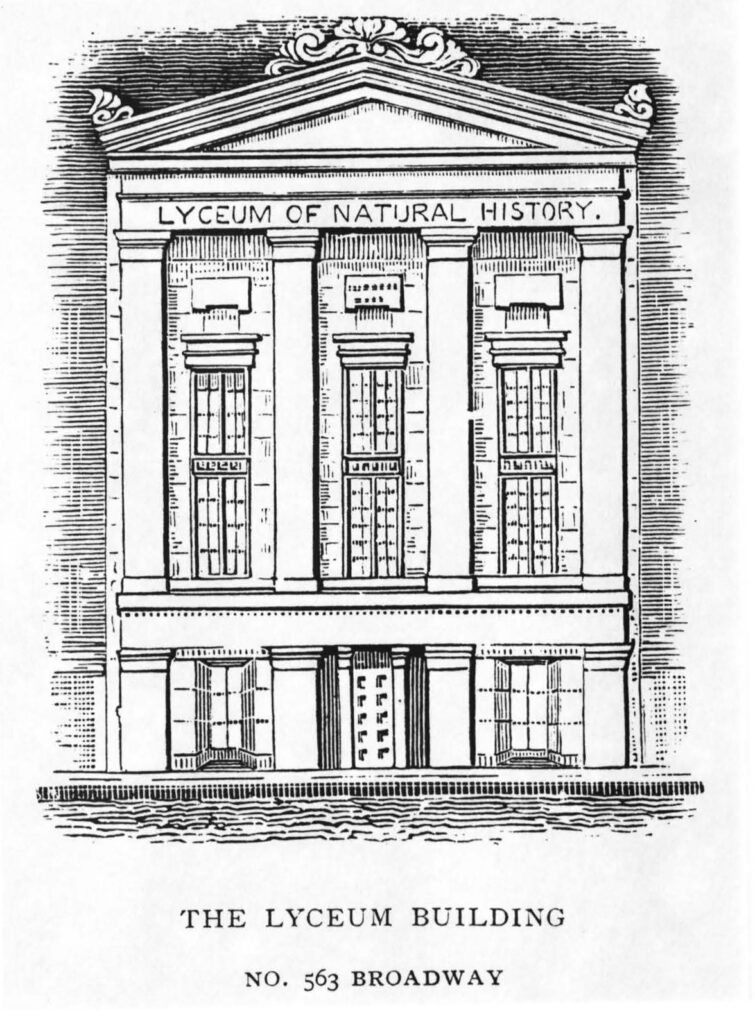Academy’s Past – A Home to Ourselves
Unfortunately for the Lyceum, the time spent in its first standalone facility was short-lived.
Published October 29, 2024
By Nick Fetty
Lyceum Building | 563 Broadway | 1836 – 1844
For the first time in its relatively short history, The Lyceum of Natural History in the City of New York (“the Lyceum”) had its own standalone building when it moved into 563 Broadway, south of Prince Street.
The first meeting in the new building was held on May 9, 1836, with 18 members present, “an unusually large attendance.” The front of the building was light gray in color and consisted of a granite pilaster and columns, reminiscent of ancient Greek or Roman architecture. The building had a frontage of 50 feet, with a depth of 100 feet.
Searching for Revenue Streams
The new space provided ample room for the collections and library given the standards of the time, though later historical accounts suggest that such an “edifice” would “be considered a very contracted space.” The new building also included spaces that could be rented to other entities, serving as a revenue source for the Lyceum, which would rename itself The New York Academy of Sciences in 1876.
Retail stores on the ground level were rented for an annual rate of $750. Rooms on the second and third floors were rented for $350 each year. The Lyceum leased its lecture hall for use by the New Jerusalem Church on Sundays, and the museum room at one time served as a space for the exhibition of paintings.
Despite the multiple uses of the building, the revenue streams generated were insufficient and the cachet of the Lyceum having its own building proved to be impractical. Financial inflation was common at this time which led to an economic depression, and the institute was forced to sell the property in 1844 for $37,000 (more than $1.5 million today), just enough to cover the building’s three mortgages and the accompanying interest. The Lyceum would move to its next home in 1845, a few blocks up Broadway.
This is the fourth piece in an eleven-part series exploring the Academy’s past homes. Read:

